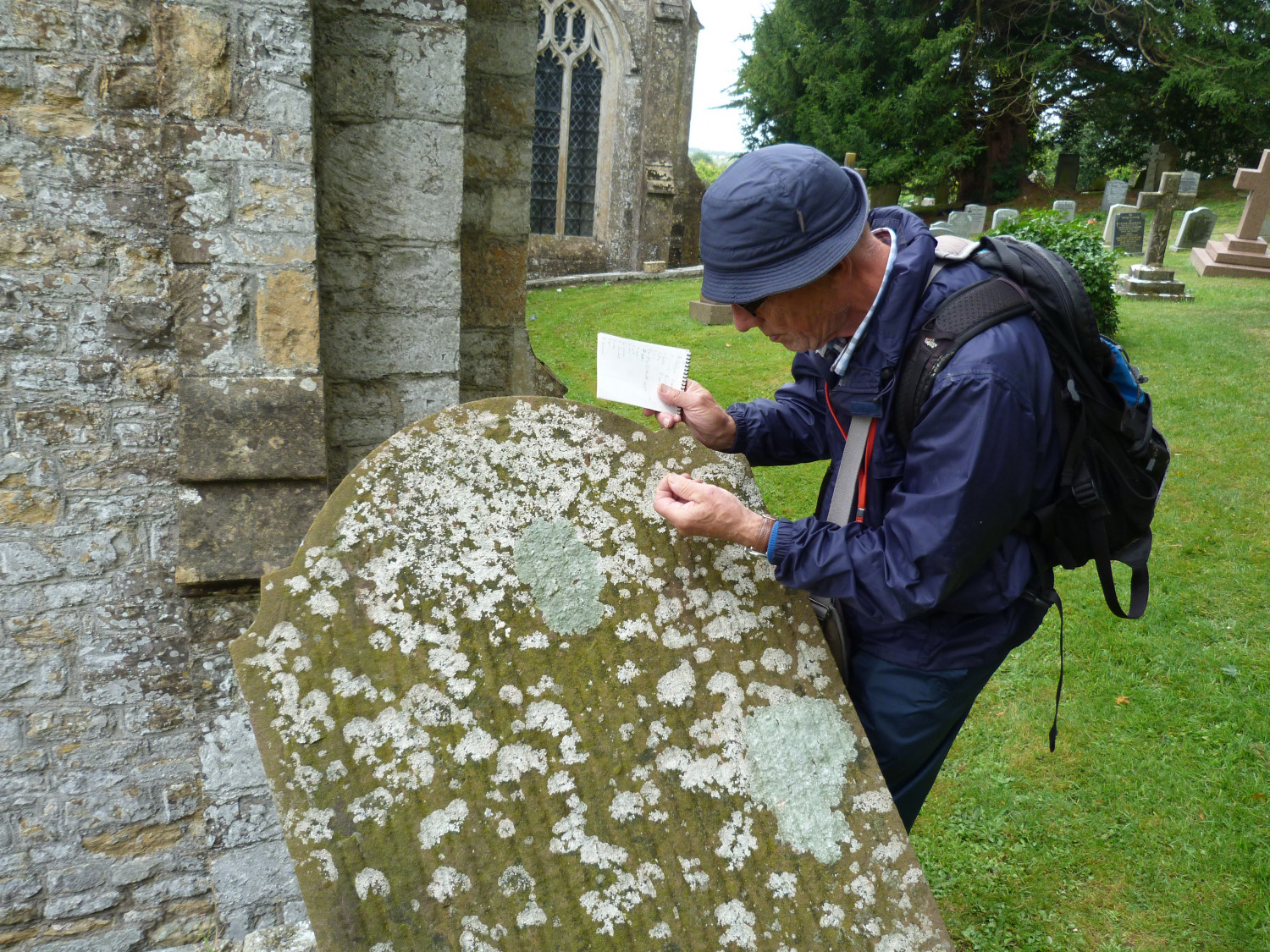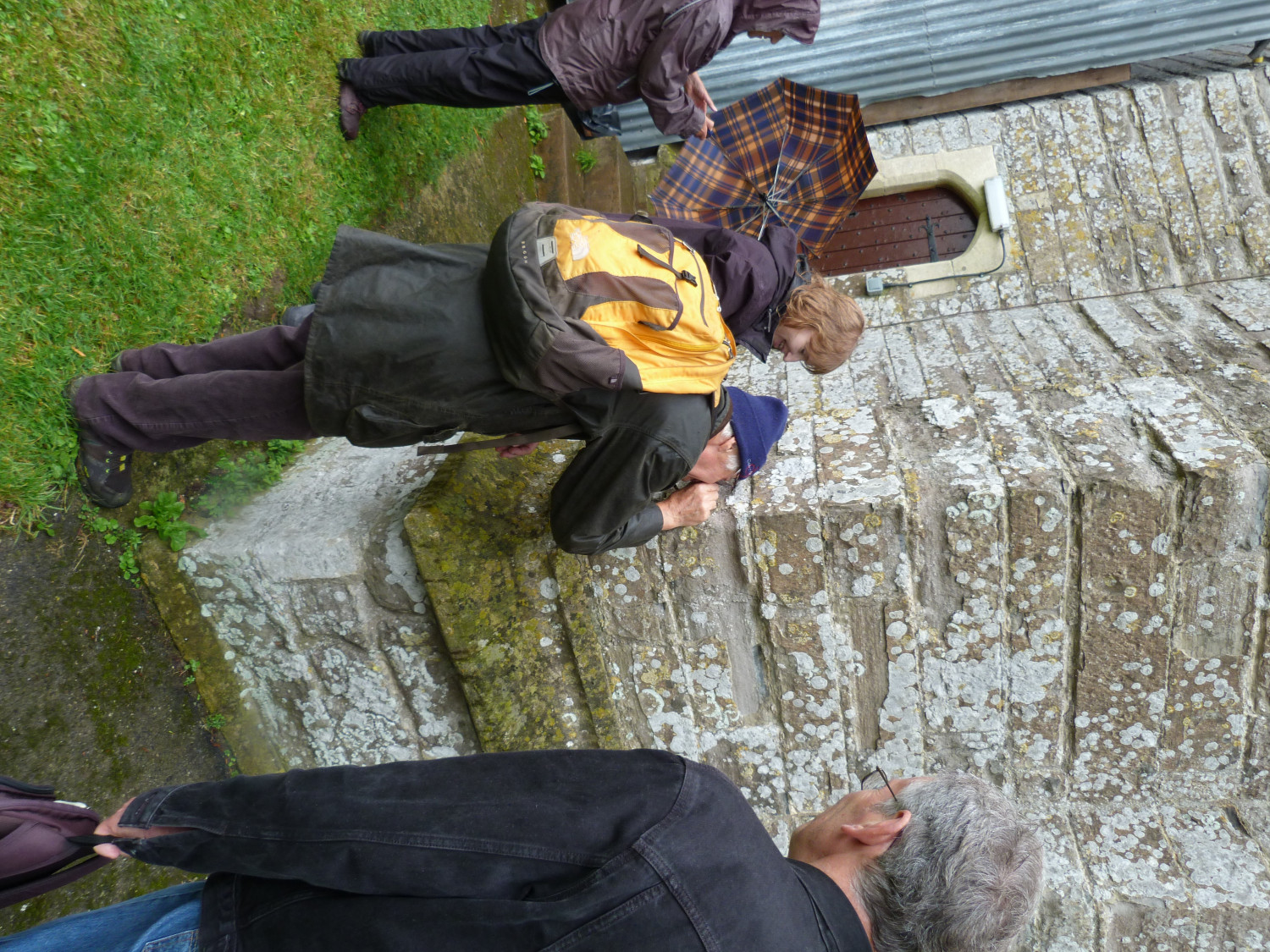

In 2018 a lichen expert from Scotland contacted us and told us that there was a rare lichen growing on the north aisle wall of St Michael's Church. He was keen to revisit the church to check whether it was still there. Unfortunately he was unable to visit again personally but he promised to put us in touch with a local lichenologist who would take a further look at the church and the churchyard. Time went by, Covid-19 lockdown 1 intervened, and the lichenologists finally arrived at St Michael's on August 5th 2020 to do their survey of the church and the churchyard.
The study of lichens is a highly specialized subject, and we were looking forward to seeing them at work and learning from their expertise. Unfortunately, we had a slow start because early morning cloud had turned to a steady drizzle and we discovered that this can cause problems for identification because lichens look different when they are wet. Nothing daunted the team got to work and began to examine the walls in minute detail with illuminated magnifiers. Most of the time recognition was instant but when it wasn't various chemicals were dropped onto the lichens to see what colour they produced. If this didn't work the next stage was to take a very small quantity and put it in a test tube for later examination under a microscope. Over 80 species were recorded.
So what did we learn on the day? The first thing is that lichens are made up of two types of living organism, a fungus and an alga. They live together in symbiosis with neither partner dominant, but they are known by the name of the fungus. Algae are plants and fungi are neither plant nor animal being, quite different from animals and plants. The general scientific opinion now is that they are more animal than plant. Lichens are very hardy and can survive in very hostile environments. Many people will be familiar with the yellow colour that rocks have at the tideline on a rocky shore. This is due to a lichen and the colour protects the species of algal cells which occur in these lichens from strong sunlight. They are able to survive regular wetting and drying and a wide temperature variation twice a day. Looking at our church and churchyard lichens you can see that the stonework of the church and the gravestones are covered with lichens of various colours. Many of these are surviving in direct sunlight but there is a clear preference for them some of them to grow on the north side of the church where temperature variation is less and the atmosphere is more moist.
Two lichen trails have been set up and are available on downloads from this webpage. A simple entry level trail can be downloaded by clicking here. A more detailed trail can be downloaded by clicking here.
Laminated copies of the trail are also available. If you wish to use the trail and require one of these, please contact Ged Keele (email gerard.keel@btinternet.com) or 01278 769010.